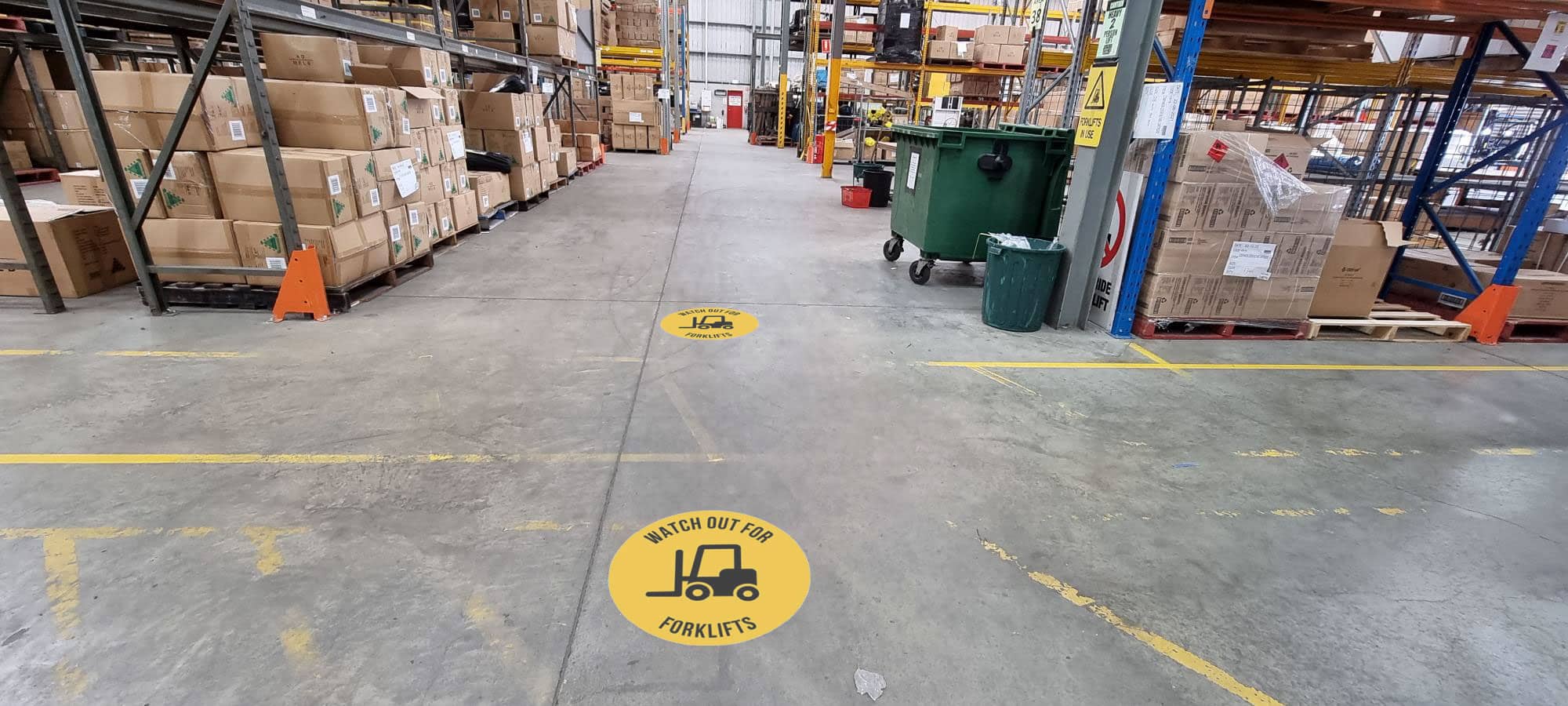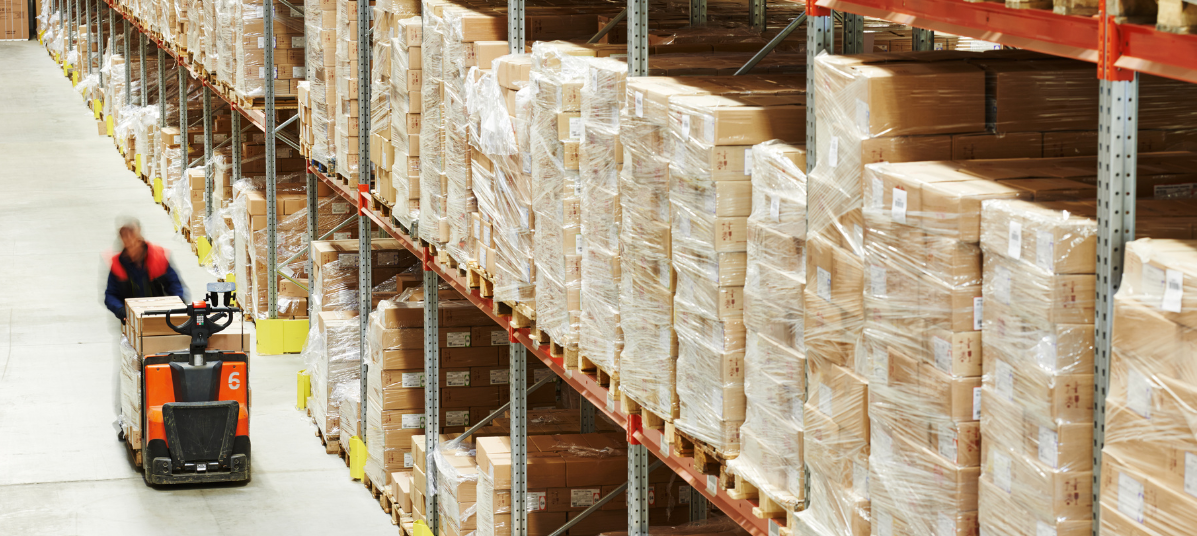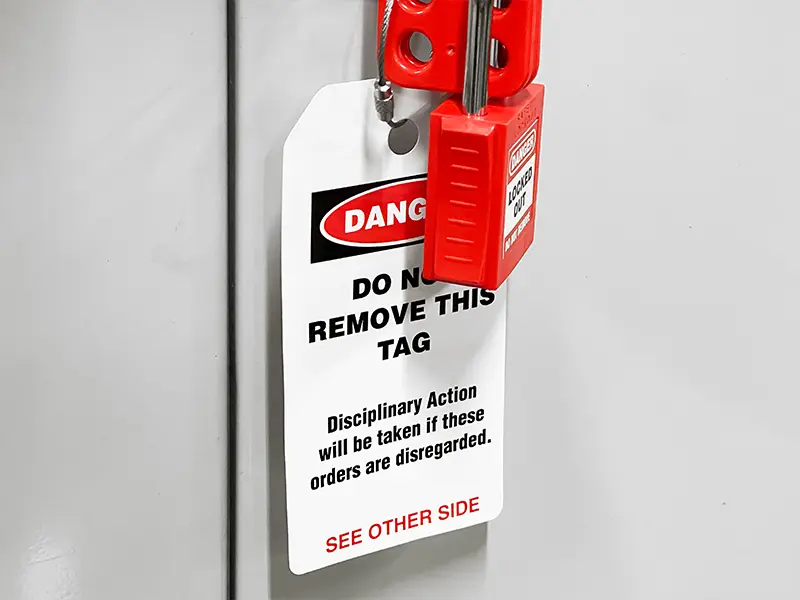Transform your warehouse operations
50+ proven strategies for effective management, organisation and improved profitability
Warehouse operations managers are faced with the complex and challenging task of managing the operations of their facility. Their responsibilities include ensuring that the products move efficiently in and out of the warehouse, optimising the warehouse’s layout, keeping products in stock but not overstocked, maintaining profitability, and minimising overhead and labour costs.
With all these factors to consider and the pressure to maintain productivity, minimise expenses, and ensure a smooth supply chain flow, it’s not surprising that there are countless resources available outlining best practices for warehouse operations. To help warehouse managers navigate this vast array of information, we have compiled a concise list of 50+ best practices from a variety of sources.
In a hurry? Browse warehouse practices by topic.
Table of Contents
Barcode Labels and QR codes for improved warehouse organisation
Improve warehouse operations and logistics
Improve safety in the warehouse
Improve warehouse workflows
Improve warehouse inventory management
Barcode labels and QR codes for improved warehouse organisation
Developing a standardised labelling system for all products and locations within the warehouse can help staff locate items quickly and efficiently. According to inventory management expert Dave Piasecki, “A consistent labelling system is critical to the efficient operation of a warehouse. If you have to explain or decipher labels to identify products or locations, you are wasting valuable time.” It is recommended to use a simple, easy-to-read font for labels, along with colour coding or numbering systems to make it even easier to locate items.
- Choose the right type of barcode
When choosing the type of barcode to use, consider factors such as the size of the label, the amount of data needed to be encoded, and the type of scanner being used. According to barcode expert Craig Aberle, “Choosing the right barcode symbology is critical to the success of any barcode application.” For example, Code 128 is a popular choice because it allows for a large amount of data to be encoded in a small space.
High-quality barcode and QR code labels are essential for preventing errors and improving accuracy in the warehouse. According to logistics consultant Lisa Harrington, “Investing in high-quality barcode labels is an investment in accuracy and efficiency.” It is recommended to use durable, weather-resistant labels that will not smudge or fade over time.
- Place labels in visible locations
Labels should be placed in visible locations on products and locations to make them easy to find and scan. It is recommended to place labels at eye level and in a consistent location on each item or location.
- Scan barcodes and QR codes during all transactions
Scanning barcodes and QR codes during all transactions is essential for accurate data collection and minimising errors. According to supply chain expert Dan Gilmore, “Scanning barcodes is a proven method to reduce errors and increase efficiency in the warehouse.” It is recommended to implement a policy that requires staff to scan labels during all transactions and to use handheld scanners or mobile devices for flexibility.
- Train staff on the barcode and QR code usage
Training all warehouse staff on the proper usage of barcode and QR code labels is crucial for maximising their benefits. According to logistics expert Alan Amling, “Barcode technology is only effective if everyone in the warehouse knows how to use it.” It is recommended to provide regular training on how to scan, interpret, and utilise the information on the barcode and QR code labels.
- Use automated barcode scanning technology
Automated barcode scanning technology, such as a conveyor system with built-in scanners, can significantly improve scanning speed and accuracy. Automated barcode scanning systems can significantly reduce labour costs and improve accuracy in the warehouse. It is recommended to implement automated systems where possible to streamline operations and improve efficiency.
- Integrate barcode and QR code labels with your warehouse management system
Integrating barcode and QR code data with a warehouse management system (WMS) can improve inventory accuracy, reduce errors, and improve order fulfilment. A WMS can provide real-time visibility into inventory levels and movements, helping to optimise warehouse operations. It is recommended to use a WMS that is compatible with barcode and QR code data and to integrate the two for maximum benefits.
“QR codes can be used to provide additional product information, such as assembly instructions or safety information,” says Piasecki. Incorporate QR codes into product packaging or labels to provide customers with valuable information.
- Regularly audit barcode and QR code labels
“Regularly auditing barcode and QR code labels helps to ensure that they are still readable and accurate,” says Watson. Conduct regular audits of barcode and QR code labels to ensure that they are still easily scannable and replace any labels that are damaged or unreadable.
By assigning specific locations for each item in the warehouse, employees can quickly locate and retrieve items, reducing the time and effort required to fulfil orders. This not only saves time but also reduces errors, as employees are less likely to pick the wrong item or quantity. Remember to apply bin location labels to your bins. Additionally, bin locations make it easier to track inventory levels and ensure that items are stored in the most appropriate locations based on factors such as demand and frequency of access.
Improve warehouse operations and logistics
- Optimise warehouse layout and organisation
A well-organised warehouse layout can significantly improve operational efficiency. To optimise warehouse layout and organisation, consider the following tips:
- Group similar products together to minimise picking time and reduce errors
- Use vertical space effectively with mezzanine levels or high-rise racking systems
- Implement a clear and consistent labelling system to make it easy for staff to find products
- Designate specific areas for loading, unloading, and storage to streamline the flow of goods
According to Ron Kubera, Senior VP of Sales and Marketing at Yale Materials Handling Corporation, “optimal warehouse design can reduce labour costs and enhance the accuracy of orders.”
- Use automation and technology
Automation and technology can help warehouse managers streamline their operations and increase efficiency. Consider the following tips:
- Implement an inventory management system to track inventory in real-time
- Use a warehouse management system to optimise product movement and reduce errors
- Use automated conveyor systems to optimise product movement
- Use barcodes or RFID technology for quick and accurate inventory tracking
John Hayes, founder of the consulting firm Vecna Robotics, “Automation has the potential to eliminate many of the manual tasks that can slow down warehouse operations.”
- Focus on employee training and safety
Training and safety should be a top priority for warehouse managers to ensure that their employees are equipped with the knowledge and tools to work efficiently and safely. Consider the following tips:
- Train staff on proper material handling techniques to minimise the risk of injury
- Use safety equipment such as guards, barriers, and personal protective equipment to prevent accidents
- Implement safety procedures for forklift operation and other heavy equipment use
- Regularly inspect equipment and facilities to identify and address safety hazards
- Optimise inventory management
Effective inventory management is essential to warehouse operations.
- Conduct regular cycle counts to maintain accurate inventory levels
- Use demand forecasting to anticipate inventory needs and reduce overstocking
- Develop an inventory replenishment strategy to ensure products are always in stock
- Use an ABC analysis to prioritise products for storage and picking
Tom Reddon, materials handling expert, “Effective inventory management can increase productivity and reduce costs by ensuring the right products are in stock at the right time.”
- Implement lean principles
Lean principles can help warehouse managers identify and eliminate waste in their operations.
According to Paul Trudgian, supply chain and logistics consultant, “Lean principles can significantly improve warehouse operations by eliminating waste and optimising workflow.” Consider the following:
- Use 5S principles to optimise workflow and reduce waste
- Streamline processes by eliminating non-value-added activities
- Implement a continuous improvement program to identify and address inefficiencies
- Encourage staff to suggest improvements to operations
- Optimise productivity
Optimising productivity is critical for warehouse operations to remain competitive in the global marketplace.
- Develop a performance management system to measure staff productivity and incentivise high performance
- Use technology to streamline operations and eliminate manual tasks
- Conduct regular staff training to improve skills and knowledge
- Set clear expectations and goals for staff
- Optimise order fulfilment
Implementing a quality control process is essential to ensure accurate and timely order fulfilment. This process should include picking and packing processes, double-checking accuracy before shipping, and tracking shipments to ensure they reach the customer on time. Data analytics can also provide insights into customer preferences and behaviour, enabling warehouse managers to tailor their order fulfilment processes to better meet the needs of their customers. As Ken Bays, director of operations at Saddle Creek Logistics Services, notes, “Accuracy in order fulfilment is critical to maintaining customer satisfaction and loyalty”.
- Implement sustainable practices
Sustainability is an increasingly important consideration for warehouse operations, and implementing sustainable practices can benefit both the environment and the bottom line. One way to do this is by reducing energy consumption through the use of energy-efficient lighting, HVAC systems, and equipment. Another approach is to use eco-friendly packaging materials, such as biodegradable or recyclable materials, to reduce waste. By implementing sustainable practices, warehouse managers can also improve their reputation and attract environmentally conscious customers.
- Collaborate with suppliers and customers
Collaboration with suppliers and customers can help to improve supply chain efficiency and reduce costs. This collaboration can take many forms, such as sharing inventory data to ensure timely replenishment, coordinating transportation to reduce costs, and working together to identify and address supply chain bottlenecks. By collaborating with partners, warehouse managers can improve delivery times, reduce costs, and enhance customer satisfaction
- Measure key performance indicators:
Measuring key performance indicators (KPIs) is critical to identifying areas for improvement and tracking progress over time. Some key KPIs for warehouse operations include inventory accuracy, order fulfilment time, and on-time delivery. By regularly tracking these KPIs, warehouse managers can identify areas for improvement and implement changes to address inefficiencies. Measuring performance is also essential for ensuring continued success and meeting customer expectations.

Improve safety in the warehouse
According to OSHA, employers who implement effective safety and health programs can expect to see significant reductions in workplace injuries and illnesses. For example, a case study by OSHA found that a company that implemented a safety program saw a 60% reduction in workplace injuries and a 40% reduction in workers’ compensation costs. By following these best practices and implementing a comprehensive safety program, warehouse managers can create a safe and healthy work environment for their employees.
- Develop and implement a safety program
Developing and implementing a safety program is the first step towards improving safety in the warehouse. This program should include policies and procedures, training programs, and regular safety audits. Conducting regular safety audits can help identify areas where safety improvements are needed. These audits should be conducted by a third-party safety consultant or by an internal safety team.
- Train employees on proper material handling techniques
Proper material handling techniques are critical to preventing injuries in the warehouse. Employees should be trained on how to lift and carry heavy objects, how to use equipment safely, and how to identify potential hazards. A formal training program should be developed and regularly updated to ensure that employees have the knowledge and skills they need to work safely.
- Provide personal protective equipment (PPE)
Personal protective equipment (PPE) should be provided to all employees who work in the warehouse. This includes gloves, safety glasses, hard hats, and other equipment as required by OSHA standards. Managers should ensure that employees wear the proper PPE at all times while working in the warehouse.
- Conduct regular safety inspections
Regular safety inspections are an important part of maintaining a safe warehouse. Managers should conduct regular inspections of equipment, storage areas, and workspaces to identify potential hazards. Any hazards that are identified should be addressed immediately.
- Encourage reporting of near-miss incidents
Encouraging employees to report near-miss incidents is an important part of improving safety in the warehouse. Near-miss incidents are incidents that could have resulted in an injury but did not. By reporting these incidents, managers can identify potential hazards and take steps to prevent them from happening in the future.
- Develop and enforce safe operating procedures
Safe operating procedures should be developed and enforced for all equipment and processes in the warehouse. These procedures should be clearly documented and communicated to all employees. Managers should also ensure that employees are trained on these procedures and that they are followed consistently.
Safety signage is an important part of improving safety in the warehouse. Signs should be posted in areas where hazards exist, such as in storage areas and near equipment. These signs should be clearly visible and easy to understand.
- Conduct regular safety training
Regular safety training should be conducted for all employees in the warehouse. This training should cover topics such as proper material handling techniques, equipment operation, and hazard identification. Managers should also ensure that employees are trained on any new equipment or processes that are introduced.
- Use technology to improve safety
Technology can be used to improve safety in the warehouse. For example, sensors can be installed on equipment to detect potential hazards and alert operators. Managers can also use data analytics to identify trends and patterns in safety incidents and take steps to prevent them from happening in the future.
- Implement a safety incentive program
Implementing a safety incentive program can help motivate employees to work safely. This program should reward employees who demonstrate safe behaviours and follow safe operating procedures. For example, employees who report near-miss incidents or identify potential hazards can be recognised for their contributions to improving safety in the warehouse.

Improve warehouse workflows
- Ensure aisles are clear
Clear aisles are crucial for an efficient flow of inventory. Employees should make sure to keep aisles free of clutter and debris to allow for easy movement of inventory and equipment.
- Efficient dock management
Implementing efficient dock management practices can improve the speed and accuracy of receiving and shipping processes. This includes scheduling deliveries and pickups in advance and ensuring that the correct equipment is available at the dock.
- Store frequently picked items near shipping
By storing frequently picked items close to the shipping area, employees can reduce travel time and increase order fulfilment speed.
- Calculate resource and space requirements
Calculating resource and space requirements based on expected receipts and current backlogs can help warehouse managers better allocate resources and maximise available space.
- Establish stable warehouse operations first
It’s important to establish stable warehouse operations before working to improve pre-planning efforts. This means focusing on creating efficient workflows and reducing errors before implementing more complex planning strategies.
- Maximise vertical space
Utilising vertical space can help maximise storage capacity and reduce the need for horizontal expansion. Warehouse managers should consider installing high-density storage systems and investing in equipment such as vertical lifts and conveyors.
- Use WMS software to organise workflows
Warehouse Management System (WMS) software can help sequence orders and organise workflow. This can improve efficiency and accuracy by providing real-time inventory data and optimising order picking and replenishment.
- Communicate effectively and often
Effective communication is key to successful warehouse operations. Employees should communicate clearly with colleagues and managers, sharing information on inventory status, order updates, and any issues that arise.
- Make smart use of floor space
Warehouse managers should make smart use of available floor space by installing modular storage systems, utilizing mezzanines and other vertical storage options, and planning workflows to minimise wasted space.
- Design storage systems to meet needs
Storage systems should be designed to meet the current and planned mix of storage types. This means considering the types of items stored, the frequency of access, and the space available when selecting storage solutions.
- Improve cycle time utilisation
By applying lean principles and improving cycle time utilisation, warehouse managers can reduce waste and improve efficiency. This can be accomplished by analysing workflows, eliminating non-value-added steps, and optimising resources.

Improve warehouse inventory management
- Implement an inventory management system
An inventory management system will enable warehouse managers to keep track of inventory levels, monitor stock movement, and reduce the likelihood of stockouts. This can help improve productivity by reducing the time spent searching for inventory and improving inventory accuracy. Additionally, automated inventory management systems can help to eliminate manual errors and reduce the risk of overstocking or understocking.
- Optimise your warehouse layout
The layout of a warehouse plays a significant role in its productivity. A well-organised layout can help to reduce travel time and minimise the risk of bottlenecks. Ensure that your warehouse is designed with efficiency in mind, with aisles wide enough to accommodate equipment and inventory, and an easily navigable floor plan.
- Implement an effective warehouse labelling system
By labelling locations, products, and equipment in a consistent and organised manner, employees can quickly locate items and move them in and out of the warehouse more efficiently. You can label pretty much everything in a warehouse: racks, shelves, bin locations, floor to name a few. Additionally, a warehouse labelling system can improve safety by clearly identifying hazardous materials or areas, reducing the risk of accidents. Overall, a warehouse labelling system is a simple yet effective way to streamline warehouse operations and improve overall productivity.
- Train employees effectively
Investing in the training of your employees can help to improve productivity, increase accuracy, and reduce errors. By ensuring that employees understand their roles and responsibilities, as well as the processes and equipment involved in their work, you can help to ensure a smooth workflow.
- Use the right equipment
Providing employees with the right equipment can help to reduce fatigue, improve accuracy, and boost productivity. This includes investing in ergonomic equipment such as pallet jacks, forklifts, and conveyors, as well as ensuring that equipment is properly maintained and serviced.
- Improve communication
Communication is key in any organisation, but it’s especially important in a warehouse environment where speed and accuracy are critical. Encourage regular communication between team members, establish protocols for communication during peak periods, and provide training on effective communication techniques.
- Conduct regular audits
Regular inventory audits can help to identify inaccuracies in inventory levels, as well as any issues with the storage or handling of inventory. This can help to improve inventory accuracy, reduce the risk of stockouts, and increase productivity.
- Implement a Just-in-Time inventory strategy
Just-in-time (JIT) inventory strategies can help to reduce inventory levels, improve cash flow, and increase productivity by minimising the time and cost associated with storing inventory. By ordering inventory only when it’s needed, you can reduce the amount of inventory you need to store and the time spent managing it.
- Use data to make informed decisions
Data can be a valuable tool in improving warehouse productivity. Collect data on inventory levels, order volumes, and employee productivity, and use this information to make informed decisions about inventory management, staffing levels, and workflow processes.
- Streamline warehouse processes
Review warehouse processes regularly to identify areas that can be streamlined or automated. This can include processes such as receiving, put-away, picking, packing, and shipping. By simplifying processes and eliminating unnecessary steps, you can help to reduce errors and increase productivity.
- Measure performance
Finally, it’s important to measure warehouse performance regularly. Use metrics such as order fulfilment time, inventory accuracy, and employee productivity to identify areas for improvement and track progress over time. This can help to motivate employees, identify areas for improvement, and ensure that productivity goals are being met.
According to a study by the Aberdeen Group, companies with best-in-class warehouse management practices achieve 99% inventory accuracy, a 25% reduction in inventory carrying costs, and a 10% improvement in order accuracy. By implementing these best practices, warehouse managers can improve their inventory management and productivity, leading to increased profitability and customer satisfaction.
Questions about the article? We are here to help!
Our team are experts in choosing suitable asset identification and tracking options for your specific application and environment. We are happy to advise and recommend the most efficient and cost-effective solutions for your workplace.








